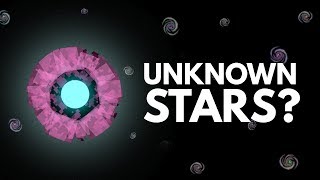(单词翻译:单击)
Hey there! Welcome to Life Noggin!
大家好!欢迎来到脑洞大开的生命奇想!
Throughout human history, people have been fascinated with the night sky -- plotting the positions of the stars, gazing at them through telescopes, and playing a massive-scale version of connect the dots.
纵观人类历史,人类一直为夜空着迷:计算星体位置,通过望远镜观察星体,还要玩大型的连点成线游戏。
And luckily for curious astronomers, there are lots of stars out there.
而那些幸运的宇航员们,可以看到外太空的许多许多星星,一饱眼福。
In the Milky Way galaxy alone, there’s estimated to be between 100 and 400 billion stars.
据估计,单单在银河系,就有一千到四千亿颗星星。
And in the entire observable Universe, there’s estimate to be around 200 billion galaxies.
而在整个可观测宇宙中,有大约两千亿个星系。
So, yeah, there’s a bunch of these things out there -- and because of that, it’s probably a good thing that you know more about them.
所以,星星有好多好多。正因为如此,你才更该多了解星星。
And to start, let’s make our way over to a nebula in the constellation Orion and check out HOPS-383, the humble beginnings of a new star.
首先,我们来看看猎户座的星云,观察一下HOPS-383,这颗恒星还处在默默无闻的原始状态。
This is known as a protostar, where sections of clouds of gas in space have collapsed under their own gravity.
它也叫作原恒星,其中的气体云在太空中由于自身引力塌缩。
This causes the center to become hotter and denser and for it to radiate energy away, collapsing it further.
这使得其中心温度升高,密度增大。而因为能量被辐射出去,气体云会继续塌缩。
Until eventually, after millions and millions of years, when the star gets hot enough where its core temperature is above 10 million Kelvin, it becomes a main sequence star. They grow up so slow.
最后,经过数百万年,星体变得非常热,核心温度达到1000万°K,就会变成主序星。长得好慢!
And also welcome to the adult world, young friend -- it’s all downhill from here.
欢迎来到成年人的世界哦,年轻的朋友!这里生活很安逸!
This is the stage of a star’s life where nuclear fusion occurs, turning hydrogen into helium in its core.
在恒星成长的这个阶段,核聚变时有发生,将星体中心的氢都变成了氦。
Not only does this produce the light you see coming from a star, but it also results in hydrostatic equilibrium, where the inward force of gravity is balanced out by outward gas and radiation pressure.
这个过程会产生我们平时看到的星光,也会发生流体静力学平衡,向内的引力被向外的气体和辐射压力抵消。
And if you’re looking for an example of one of these stars, you need look no further than the light of your life -- the Sun.
想知道具体情况,可以看看你的生命之光——太阳。
In fact, a lot of stars in the Universe are in this stage of their lives and they vary widely.
其实宇宙中很多星体都处在这个生命阶段,彼此差别也很大。
I mean, just take a look at the Hertzsprung-Russell Diagram!
我是说,看看赫—罗图!
This awesome tool conveniently tells you information about a star’s temperature, luminosity, color, and more.
这个高端的工具可以显示关于星星温度、光度、颜色等信息,十分便捷。
And the main sequence stars span from the upper left showing the hot luminos stars to the bottom right showing the cool faint stars.
左上角是最热最亮的主序星,右下角是最冷最暗的主序星。以此类推。
Oh, and see those letters down at the bottom?
看到下边这些字母了吗?
That’s a classification scheme created by Annie Jump Cannon in the early 1900s based on stellar spectra.
那是安妮·坎农在20世纪早期基于恒星光谱制作的分类表。
Hotter stars are O stars and cooler stars are M stars.
温度高的用0表示,温度低的用M表示。
And as stars age and their characteristics change, their position on the HR Diagram will change as well.
由于星体年龄和特点各有不同,他们在赫—罗图的位置也相应不同。
Toward the end of a star’s life, it will run out of hydrogen in its core and leave the main sequence stage.
星体到了生命尽头,会用尽其中心的氢气,结束主序时期。
For a star like the Sun, it will eventually turn into a red giant … that may or may not completely destroy the Earth … not cool, Sun!
像太阳这样的星体,最后会变成红色的大……太阳!不知道会不会摧毁地球。
From here, eventually, any nuclear fusion will completely stop and the star will collapse inward and become a tiny and incredibly dense white dwarf.
从这里开始,核聚变结束,星体向内塌缩,变成体积很小密度很大的白色侏儒星。
Of course, that’s not the only way a star can end its life -- others may die in a Type II supernova producing dense neutron stars.
当然,星体生命结束不只有这一种方式,其他星体可能会在II型超新星中结束生命,形成高密度的中子星。
And others may even form stellar black holes.
还有一些可能终结于恒星黑洞。 Stars sure do like to make dramatic exits, huh?
Stars sure do like to make dramatic exits, huh?
星星们都喜欢戏剧般的离开吗?
so I hope this will make you look at the night sky a little differently, and if you are curious to know how much money spaces actually worth. Well then you should check out this video.
所以我希望这个视频可以让你从不一样的角度仰望夜空,如果你还有兴趣的话,可以看看这个视频,主题是太空值多少钱。
As always, I’m Blocko and this has been Life Noggin.
我是宝高,这里是脑洞大开的生命奇想。
Don’t forget to keep on thinking!
思考不要停!


